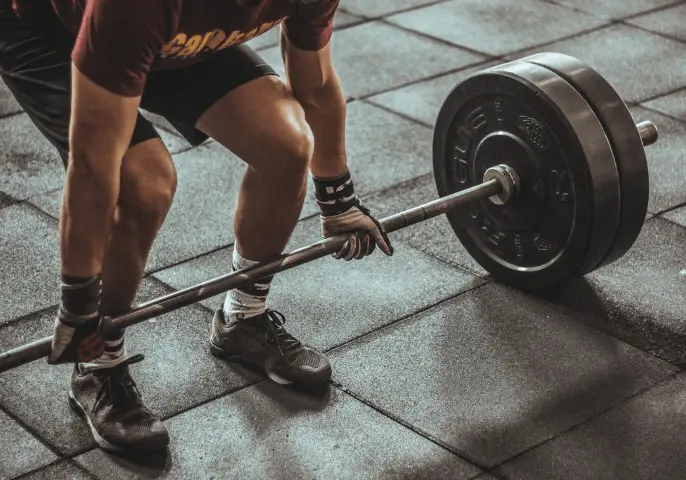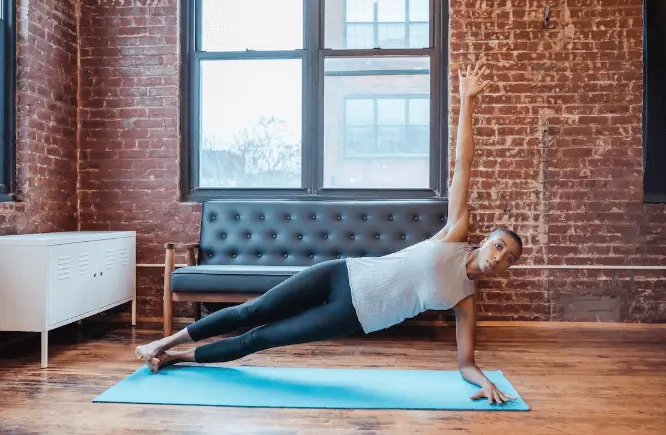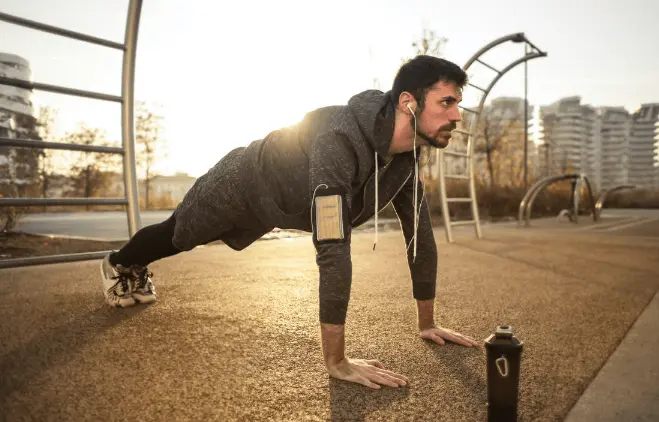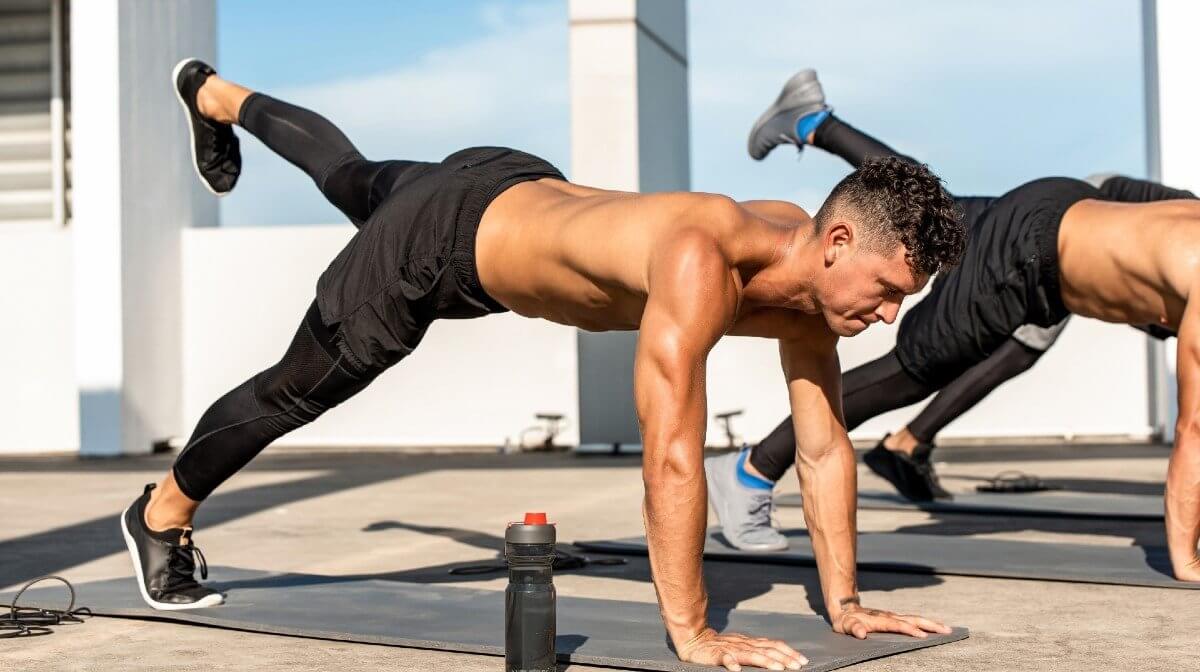Compound exercises are those exercises which work for multiple muscle groups at once. To state an example, a deadlift (a compound exercise) works on the forearms, glutes, hamstrings and core simultaneously.
These compound exercises are known to provide cardiovascular benefits by increasing your heart rate. They also aid in improving your balance and body coordination.
As you may already know, they differ from isolation exercises that work on a single muscle group at a time. Moreover, compound exercises make you burn more calories in comparison to that isolation exercises.
If you are a beginner, this article can be your complete guide for compound exercises. Explore the article below to know about various compound exercises, their advantages and some tips that can keep you safe.
Why should you perform compound exercises?
Besides all the other advantages of these exercises, they help save your time. If you have a busy schedule and can only allot limited time for working out, compound exercises can make you work on multiple muscles efficiently in a short time.
Nonetheless, compound exercises are a must in strength training as they improve your strength and help you gain more muscle mass. These exercises can help you with better flexibility and intramuscular coordination.
Incorporating compound exercises into your regular workout routine can assist you in burning more calories.
If you want to include multi-muscle exercises in your next workout, you may go for the exercises mentioned below. These are some of the best compound exercises and are beginner-friendly.
Deadlift
Equipment required: barbell
Target muscles: forearms, glutes, core, hamstrings and back.
Stand on the floor your feet hip-width apart and toes below the bar. Now, bend your hips back while Keeping your core tight and your spine neutral and squat down. Make sure you do not curve your back.
Grab the bar with your hands placing them slightly wider than your thighs. Push through the heels and start to lift. Keeping it close to your body, pull the bar and hips up at the same time. Now, hinge at your hips and slowly lower the bar to the ground
Perform 10 reps and take a 30-second rest between each set. You may work up to 3 sets.

Squat
Equipment required: none
Target muscles: calves, glutes and quadriceps
Stand with your feet slightly wider than your hips and feet turned out a little. Keep your chest out while involving abdominal muscles. Push your hips back and shift your weight into your heels. Lower yourself into a squat until your thighs are almost parallel to the floor.
Keep your core tight while you push through your heels to stand back up straight and squeeze the glutes at the top. Perform 10 to 15 reps and work up to 3 sets.
Kettlebell swing
Equipment required: kettlebell
Target muscles: back, shoulders, glutes, hamstrings and hips
Stand straight with your feet shoulder-width apart. Hold a kettlebell with two hands and let it hang in front of you. Bend at your hips and knees to move the kettlebell backwards through your legs. Now, swing the kettlebell up to the height of your shoulders by driving your hips forward and straight.
Come back to the starting point with control and repeat. With this exercise, you can also challenge your grip strength.
High plank T-spine rotation
Equipment required: none
Target muscles: shoulders and abs
Start with a push-up position (arms under your shoulders and engage your core). Make sure your legs are hip-width apart while performing this exercise. Anchor your right hand to the floor while squeezing your glutes and thighs. Now, lift your left arm and twist your body to the left.
Bring back the left arm to the ground and repeat it on the left side. Perform up to 10 reps on each side and finish at least 3 sets.

Reverse lunge with bicep curl
Equipment required: a set of dumbbells
Target muscles: abs, hips, biceps, glutes, and hamstrings
Hold one dumbbell in each hand while Standing with your feet hip-width apart. Extend your hands down such that your palms are facing the body. Now, step backwards with your left foot and lower your legs and hips into a lunge position. Return to the standing position by pressing the right foot into the ground.
Balance on this foot and do not place your left foot on the ground. Now, at the same time, perform biceps curls with both hands. Place your left foot on the ground, arms back down and dumbbells parallel to your body.
Repeat at least 6 times before going for the opposite leg. Once you finish the opposite side as well, rest for 60-90 seconds. Perform 2 to 3 sets this way.
Burpee
Equipment required: none
Target muscles: full body
Stand straight with your feet shoulder-width apart. Now, drop and place your hands on either side of your feet. Jump your feet back so that you can come to a high plank position. Now, you may do a press-up or jump your feet forward and stand straight with your hands above your head. Land slowly and go for the next rep.
Pull-up
Equipment required: pull-up bar, resistance bands (optional)
Target muscles: entire upper body especially the back and core
With your hands shoulder-width apart, grip the bar, palms facing away from you. Push yourself up until your chin reaches the bar while pushing your shoulders back and engaging your core. Pause there and lower under control until arms are fully outstretched.
You may find it difficult to perform more than 3 reps in the beginning but you can gradually work your way up.
Press-up
Equipment required: none
Target muscles: chest, triceps and shoulders
Start with your hands and toes on the ground. Place your hands directly under your shoulders while extending your arms and legs. Tighten your core and bend your elbows to lower your chest. Press back up once your chest almost touches the ground.
Perform 10 reps and work up to 3 reps in the beginning.

Front lunge with twist
Equipment required:
Target muscles:
How to plan the workout schedule
A healthy adult can perform these compound exercises 2 to 3 times a week. This depends on your fitness level as well. We suggest a minimum of 48 hours gap between two strength training sessions.
You may focus on multiple muscle groups every day or you may alternate between lower and upper body-focused compound exercises during one training session.
On the days you rest from strength training, you may perform cardio workouts. Incorporating these cardio sessions into your workout schedules can help you get your heart rate up and burn more fat or calories.
Safety guidelines
Some of the compound exercises require to have proper form and technique to prevent injuries. For your safety, it is essential to do these exercises under a fitness expert’s supervision, especially when you are a beginner or performing these exercises for the first time.
Moreover, hiring a trainer or an expert is suggested for beginners as you might not know the right weight that you can start lifting. Always go for light weights, with which you can comfortably perform a minimum of 10 reps in each set at the start of your strength training.
Once you feel stable, you can add more weights in the coming sets. Feeling a burn by the end of the reps is normal while feeling unstable is not.
Stay hydrated during the sessions by drinking water in between sets. It is best to stop working out if you feel unwell or dizzy during your session.
